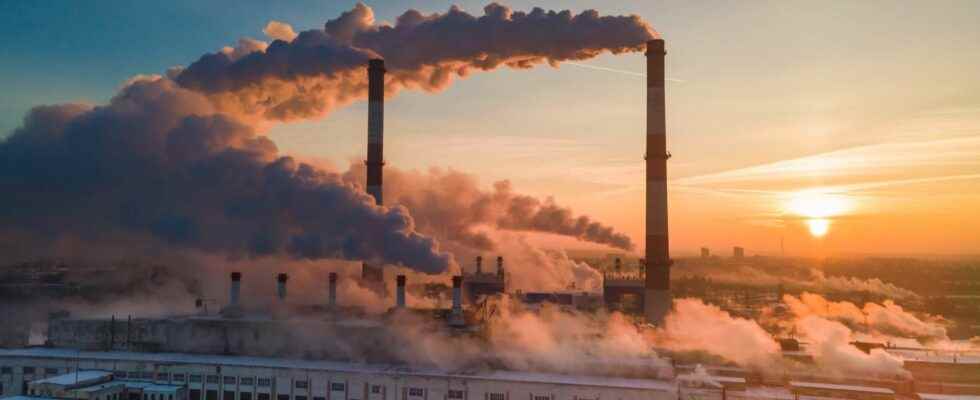You will also be interested
[EN VIDÉO] The water cycle modified by global warming On our planet, monitoring the water cycle is essential to understanding global warming. The Cnes talks to us, during this video, about the various space missions which, for several years now, have made it possible to follow water all around the Globe.
Accelerating warming, intensifying impacts causing unprecedented suffering to humanity responsible for this devastation, and only one way to avoid the worst, drastically reduce the emissions of greenhouse gas.
Here are the main conclusions of the sixth evaluation round of climate experts of ONU (IPCC) broken down into some 10,000 pages and three reports — physical of climateimpacts and adaptation, emission reduction solution — published in August 2021, February 2022 and this Monday, April 4, 2022. Like previous assessment cycles which have taken place approximately every six or seven years since 1990, this trilogy will serve as reference for the next few years.
No more doubt about the anthropogenic cause
Whether climate skeptics like it or not, the scientific evidence has removed the slightest doubts that might remain: humans are ” indisputably responsible for global warming, which has increased by around +1.1°C since the pre-industrial era.
The rate of increase in CO concentration2 in the atmosphere between 1900 and 2019, largely linked to fossil fuelsis at least ten times higher than during any other period of the last 800,000 years and the concentration of CO2 in the atmosphere has never been so high for more than 2 million years.
Is the 1.5°C target already “out of reach”?
The 2015 Paris Agreement aims to limit global warming. well below » +2°C, if possible +1.5°C. But, in all the scenarios considered by the Intergovernmental Panel on Climate Change — from the most optimistic or more pessimistic –, the global temperature should reach +1.5 or +1.6°C compared to the pre-industrial era around 2030. That is ten years earlier than previously estimated.
Even if there is a possibility to then return under the threshold of +1.5°C by the end of the century, even a temporary overrun would cause “irreversible” damage to some ecosystems fragile (poles, mountains, coasts), with cascading effects on populations.
Even if current state commitments to reduce emissions by 2030 were met, not exceeding +1.5°C at least temporarily would be “out of reach” and reaching +2°C would be difficult. Without strengthening current policies, warming could even reach 3.2°C by 2100, twice the ideal goal of the Paris Agreement.
The beginning of suffering for half of humanity
The devastating consequences of climate changelong seen as a dot on the horizon, have become a reality in the four corners of the planet, with 3.3 to 3.6 billion people already ” very vulnerable », that is almost half of humanity. And that’s just the beginning.
Drought, heat waves with, in places, temperature extremes that are literally unbearable, storms, floodswater shortages, loss of agricultural crops… The secondary effects of global warming atmosphere and oceans are set to intensify, with a disproportionate impact on the most vulnerable, such as the poor and indigenous peoples.
Without forgetting the possible exodus of hundreds of millions of people in the face of the inexorable rise in sea level, mainly linked to the melting from ice caps of Greenland andAntarctic.
Even if warming is limited to +2°C, the oceans could gain around 50 cm in the 21stand century and this rise could reach nearly 2 meters by 2300 — twice as much as estimated by the IPCC in 2019.
Immediate GHG reduction
The IPCC keeps repeating that its role is not to make recommendations, but the scenarios it has developed leave no choice if humanity wants to ensure a ” livable future » on the Planet: even to limit to 2°C, it is necessary « a rapid, radical and most often immediate reduction of greenhouse gas emissions in all sectors “, insists the IPCC, emphasizing energy, transport, industry, agriculture and cities.
A rapid, radical and most often immediate reduction of greenhouse gas emissions in all sectors
To limit global warming to +1.5°C, a major transformation of the energy system would be needed, with the reduction of use (without techniques for capturing carbon) coal, oil and gas respectively by around 100%, 60% and 70% by 2050 compared to 2019.
The threat of breaking points
These three IPCC reports have never made so much room for the possibility of tipping points, abrupt changes in the climate system at ” low probability ” but ” significant impacts ” who ” cannot be excluded “.
Among them, the point of no return leading to thecollapse total ice caps, capable of raising the sea tens of meters; the thawing of the permafrost which contains volumes immense amounts of carbon; or the conversion in the savannah of the Amazon which absorbs a vital part of CO2 emitted by human activities.
If scientists are currently uncertain about the warming threshold that would trigger these ” singular events on a planetary scale they know that the risk is greater at +2°C than at +1.5°C. And that we pass in a ” very high risk » by +2.5°C.
Interested in what you just read?
